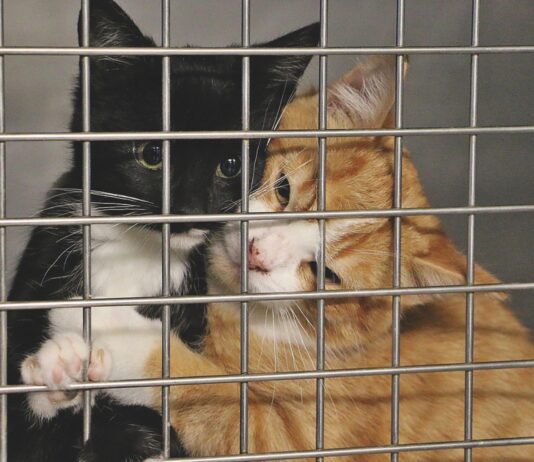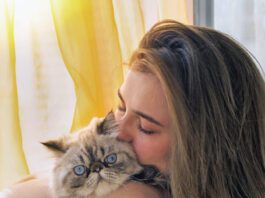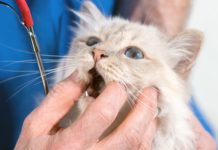Deciphering Drool
When you think drool, you think dogs, but cats drool, too. The difference is, feline drool is rarely normal. If your cat is drooling, she may be either overproducing saliva or having trouble swallowing it, and it is important to find out the cause.
When Heart Failure Occurs
Any cat can experience heart failure, something owners may be unaware of until its an emergency. The symptoms can remain hidden because cats are stoic and can often appear normal, even when they are very ill.
Drowning in Dandruff
Visable dandruff is rarely normal. It may indicate a problem in our care or an underlying health problem.
Fungus in Brazil
The American Veterinary Medical Association (AVMA) reports that the Centers for Disease Control (CDC) is monitoring a fungal infection (Sporothrix brasiliensis) in Brazil and nearby countries that is being spread by cats to people. The infections in cats are known as clown nose because of the swollen, infected nasal mucosa seen in affected cats. Its usually fatal in cats.
AAFP on Vaccines
The American Association of Feline Practitioners makes recommendations on vaccine choices for cats that you can use in vaccination discussions with your veterinarian.
Tiny Antiviral Molecule Offers Hope
Feline infectious peritonitis (FIP) is a devastating disease of cats for which there are currently no effective therapies available. Occurring in two forms-a wet form in which fluid accumulates in body cavities and a dry form in which affected cats develop neurological signs-the current prognosis for cats with FIP is grave. FIP develops in approximately 5 percent of cats infected with the ubiquitous (and usually well-tolerated) feline enteric coronavirus.
Choosing a Board-Certified Veterinarian
If your cat has been diagnosed with a complex or serious illness or needs specialty surgery, your regular veterinarian may recommend a referral to a board-certified specialist, a veterinarian who has put in extra training in a certain field, much like a human oncologist or cardiologist.
Cats Are Larger
Modern domestic cats are at least 16 percent bigger than their Viking-Age ancestors (793-1066 AD), according to a Danish study shared by The Winn Foundation. Researchers excavated the remains of adult domestic cats at archaeological sites in Denmark as well as modern skeletal remains.
5 Things to Know About Feline Hypertension
Blood pressure in cats is measured as in humans, with the systolic (upper) value representing the pressure in the blood vessels when the heart is contracting and the diastolic (lower) value representing the pressure in the blood vessels when the heart relaxes.
Your Guide to Pain in Cats
Cats hide injuries and pain by instinct, a behavior that is important for survival in the wild. This forces us to be detectives when our cats are ill.
How Your Kitty Uses Radar
Your cat has several rows of whiskers, usually 12 arranged in rows, and a few over her eyes. You may also see them along her jawline, near her ears, and on the back of her front legs. All these whiskers, or vibrissae, are stiff tactile hairs that help your cat learn about her environment.
Poor Prognosis: Restrictive Cardiomyopathy
A recent study out of Italy looked at survival and prognostic factors for cats with restrictive cardiomyopathy. The researchers looked at 90 cats who had been diagnosed with this cardiac condition via echocardiography between 1997 and 2015. There were 53 more males than females in the study.

















